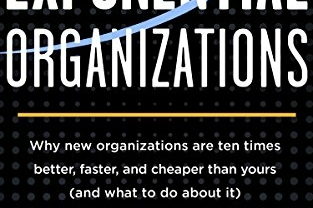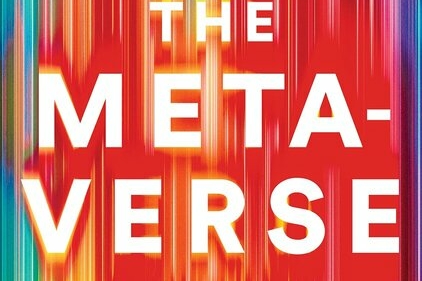In Master Content Marketing: A Simple Strategy to Cure the Blank Page Blues and Attract a Profitable Audience, Online Business coach Pamela Wilson describes a step-by-step guide through the content marketing process.
Favorite Takeaways -Master Content Marketing by Pamela Wilson
The Three Aspects of Content Marketing (Audience, Strategy, and Simplicity)
Audience
Content marketing is not about “campaigns” that are really poorly-disguised pitches. You create the right kind of con- tent that attracts the right kind of audience, resulting in more customers and clients.
Strategy
Research on content marketing effectiveness shows that the people who struggle with it have no documented strategy whatsoever. Reading this book will immediately put you on the right track, because you’ll understand exactly what you’re trying to accomplish before creating a single piece of content.
Simplicity
No respectable book on content marketing would claim that it’s easy … you’re effectively becoming a media producer with a smart content strategy, and that takes work.
Traditional vs Content Marketing
Content marketing is like putting out bait rather than throwing a spear. It’s like offering some delicious, nutritious bait and inviting the fish to swim your way. It draws them in. The best part is that some will stay there, interacting with your brand. They’ll become your customers, and then repeat customers.
Content marketing is like putting out bait rather than throwing a spear.
Old Marketing
It was like throwing marketing “spears” at a school of fish in the hopes you’d hit one. You wasted a lot of energy and didn’t see a lot of results.
Content marketing works when you create useful, interesting, and engaging information consistently over time. It’s all about showing up reliably and being helpful, every single time.
Content Creation is a Habit
Content creation is a habit you form. Part of the process is setting up your physical environment for success — carving out a space and laying out your tools. The other part of the process is withholding judgment on the outcome.
The best ideas come from a place in your mind that’s not standing in judgment or full of worry. It’s not distracted or stressed. It’s relaxed and looking forward to just doing the work, in happy anticipation of the process more than the final product.
Content Idea Library
A content idea library stores your overall site plans so you can take them out and review them at a moment’s notice. It contains article ideas in an easy-to-skim format. A content idea library is a supportive source of inspiration and ideas for all your future content. A content idea library is the working space where your content plan lives.
A content idea library — a reliable, easy-to-use place to maintain your content plan and ideas — you’ll always have a source to draw from.
Content Library Components
- One main page or section with your category plan so you can quickly reference it.
- Subsections for categories with places to add content ideas.
- A way to indicate which ideas you’ve used.
- A place to add notes about other content to link to, ideas you want to be sure to include, publication dates, and the like.
Customer Journey
Prospects and customers go through a process of getting to know your business until they feel comfortable opening their wallets and doing business with you. It’s called a “customer journey.” Although many have tried to map it out and identify key steps along the way, the reality is that the journey taken will look a little different for each person. Customer journeys are as different as the people who take them.
Content marketing is designed to facilitate the customer journey — no matter what it looks like — by offering up the right information every step ofthe way.
Identify and Write to Your Customer’s Experience Level
Beginner, or “What Is ___?”
Your beginning readers comprise a vast audience, and it’s important to serve them well. Many of your prospects will find your site because they do a web search for something they’d like to know. They find your content because it answers their question. And they stick around because they see that your information is consistently helpful. These beginner readers are ripe prospects who you can move along a customer journey using your content. To write content that helps them, think about your main topic and all the related subtopics.
Beginners have questions — lots of them. And some of them are so basic they might be embarrassed to ask them if they were standing right in front of you. Guess what? That’s why they’re doing a web search! So make sure you provide plenty of content that answers the “What is ___?” fundamental questions that are running through your beginning readers’ minds.
Intermediate, or “How Do I Do ___?
Your intermediate readers have gone beyond the basics. They’ve found answers to their “embarrassing” questions. Now they’re working to achieve mastery. They have a vision, they’re working toward it, and they’re looking to your content for help. Intermediate readers are voracious consumers of “how-to” style content. They want tips, checklists, “ultimate guides,” and step-by-step tutorials. And when you deliver this kind of content to them, they’ll save it, revisit it, and share it with their friends because they found it useful.
Advanced, or “How Do I Get Better at ___?
Advanced readers have the basics down pat. They’ve also mastered intermediate-level questions and know how to do most activities and tasks associated with your topic. When they get to this point, they morph into advanced readers. And they’re still looking to you and your content to guide them on their journeys. After all, you’re the authoritative voice who got them to this point, right? Your site is their preferred place to learn.
Advanced readers want to improve their performance. They know how to do the basics. Now they want to get better, faster, and more efficient.
Write mostly for beginners.
The beginner audience is massive, and reaching out to them will help you bring in a steady stream of prospects who will be forever grateful you were there for them when they were asking their newbie questions.
Notice objections and write answers to them.
Anytime you make an offer, people will find all sorts of reasons not to buy. When you’re writing a sales page, for example, you’ll want to be sure you’re answering those objections and pro- viding reassurance in your copy.
Match Your Content to Your Customer’s Journey:
- For beginner readers, answer What Is ___? Beginner content defines a topic and helps web searchers expand their understanding of the basics.
- For intermediate readers, answer How Do I Do ___? Intermediate readers want to know how to apply what they’re learning to their lives and situations. “How-to” content fits perfectly into this category.
- For advanced readers, answer How Do I Get Better at ___? Advanced readers crave mastery. What content can you create that will help them get really good at your topic?
Seven Essential Elements of Successful Content
- The compelling headline:
Want your content to be read? Spend lots and lots of time (way more than you think) working to write an engaging headline.
Great headlines are a combination offormulas plus an intimate understanding of the hopes, dreams, fears,and challenges of the people you want to reach.
3. The Intro Section
Just like most homes have a front porch or an entry area just inside the front door, your content has an intro section that serves as a transition to your main content section. Its job is incredibly important. This is the first place on the page where you’re asking the reader to commit to reading what you’ve written. They’ve seen your headline and clicked on it. They’ve read your first sentence. Now you’re asking them to keep reading.
4. The subheads: The job of your subheads is to give skimmers and readers alike a set of highly visible “signposts” they can follow to make their way through your content.
5. The main copy:
It’s all the writing you’re going to do outside of the sections above and the sections below. It’s the meat of your content — the heart of your post.
6. The summary:
At some point toward the end of your content, you need to wrap up the topic you’re covering and move readers to the final content element — the call to action. The summary section does this for your readers.
7. The call to action: Content marketing serves a business purpose. It helps your website get found, it attracts prospects to your business, and it gives you a way to develop a trust-based relationship with them.
Great content — well-planned, masterfully written, easy-to-read content — always rises to the top.
Need help with developing a digital strategy for your business? Get in touch.


